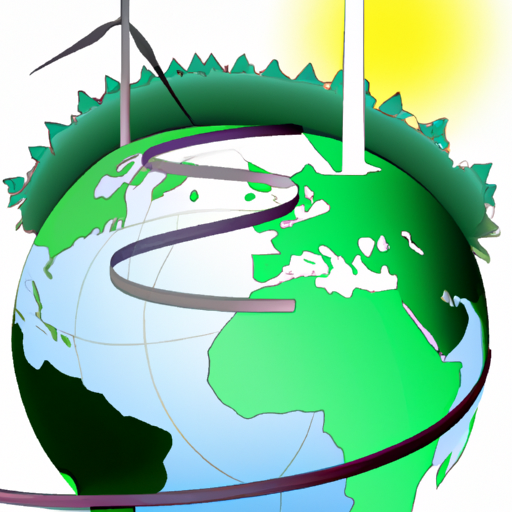The Momentum Behind Renewable Energy Expansion
With the latest insights from energy research groups, there’s an uplifting trend in the power sector: renewable energy’s capacity is poised to see an impressive expansion by the end of this decade.
A Glimpse at the Report’s Findings
The pursuit of a more sustainable future is gaining speed, as suggested by a riveting analysis from the energy think tank Ember. Their examination dives into the renewable ambitions of 57 countries, along with the European Union, which together are responsible for a significant 90% chunk of the globe’s power sector emissions. Projected advancements in green energy are set to catapult global renewable capacity from 3.4 terawatts (TW) in 2022 to an astonishing 7.3 TW by 2030. The shift towards greener energy is mainly driven by wind and solar sources, anticipated to make up over three-quarters of this new capacity.
Outperforming Expectations
The pace at which renewable energy technologies are being rolled out is outrunning what governments had initially planned. 2023 alone saw a strategy unfold that, if maintained, would result in renewables doubling over the decade. That said, there’s belief in an even sharper incline in renewable growth rates. Since 2016, the global growth rate has hovered around 17%. If this trajectory stays constant, a tripling of renewable energy capacity is not just a dream but could transform into reality.
Record-Breaking Achievements in Renewables
Renewable energy sources have had a banner year, with predictions from the International Energy Agency (IEA) suggesting an ambitious addition of 500 gigawatts (GW) in 2023 alone—leaps and bounds beyond what was accomplished in 2022. The tide is especially noticeable in the solar industry, where installation milestones surpassed the entire renewable capacity of the United States. The swift expansion is also mirrored in solar panel manufacturing, which is on track to cross the 1,000 GW threshold by 2024.
Targets Surpassed and Ambitions High
Current national targets might not fully encapsulate this exponential growth. Numerous countries have ongoing renewable projects that are expected to overshoot their 2030 renewable energy goals. Specifically, 22 countries have projects underway poised to exceed these targets, while 12 of them are constructing renewable facilities at a rate that would achieve their objectives well before 2030. Brazil exemplifies this trend, gearing up to install almost triple its annual target for renewable capacity this year.
Dr. Katye Altieri from Ember urges a revision of governmental targets, underscoring the swift evolution underway in the renewables sector. With the upcoming COP28 summit, there’s a growing confidence in discussing the feasibility of globally tripling renewable capacity.
Charting the Course to Tripling Renewables
Looking forward to the COP28 presidency, a global consensus is sought to dramatically enhance renewable capacity. Ember indicates that to meet a global target of tripling renewables (aiming for 11 TW), it would be essential to close a significant 3.7 TW gap, which spans between current national targets and the desired global milestone. This demands brisk deployment and amped ambition.
Several countries are already setting the pace with bold targets, like India, aiming to multiply their renewable energy threefold. The ambition is evident, with a dozen countries including the US, with targets that aim even beyond the recommended global goal of a 40% renewable share by 2030. Moreover, 20 countries are planning to transition a substantial fraction of their electricity from fossil fuels to renewables within this decade, with South Africa being a notable example.
However, the spotlight falls on certain key players, including Australia, Japan, South Korea, and the United Arab Emirates. Despite already surpassing their targets, these countries are among the highest power sector emitters per capita and are called to raise their ambitions further.
Dr. Altieri brings the discussion back to climate action, emphasizing that a worldwide tripling of renewable energy capacity is the most pivotal move we can make in this decade. She suggests that by aligning their targets with the current evolution and introducing strong policies in support of solar and wind energy infrastructure development, governments can truly bring this crucial goal within grasp.
























